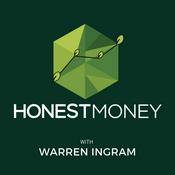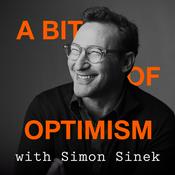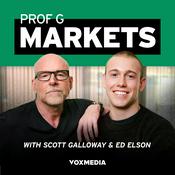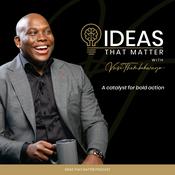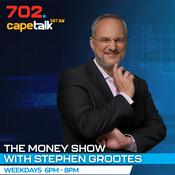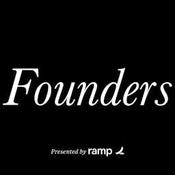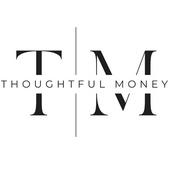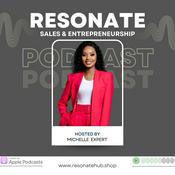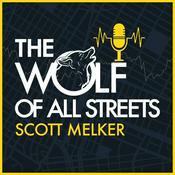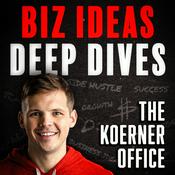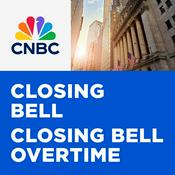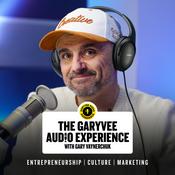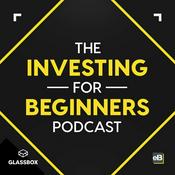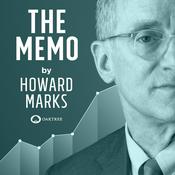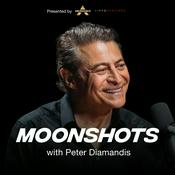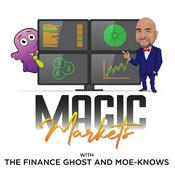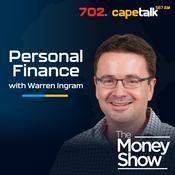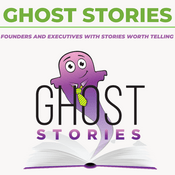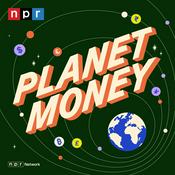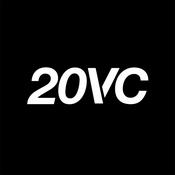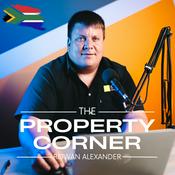182 episodes

The Space Show Presents ISAAC Arthur on all things space. Don't miss this one!
2025/12/17 | 2h
The Space Show Presents Isaac Arthur, Sunday, 12-14-25Quick SummaryOur program began with a discussion about space exploration projects and the evolution of telecommunications, followed by a conversation about AI’s impact on education and society. The Wisdom Team then explored various space-related topics including lunar missions, space habitats, and the importance of public-private partnerships in funding exploration efforts. The discussion concluded with Isaac, as president of the National Space Society, emphasizing the organization’s mission and encouraging listener participation in space exploration initiatives.Detailed SummaryIsaac and I started the conversation talking about space exploration, with Isaac expressing caution about discussing specific details of NASA’s Artemis program due to its frequent changes. David emphasized the need to balance discussion of Artemis with other space-related topics to avoid overwhelming our conversations as Artemis is a hot topic at this time. We began talking about space exploration projects, including Mars missions and space elevators, with Isaac expressing skepticism about fusion technology progress. I then introduced the program schedule, noting upcoming guest appearances and the annual fundraising campaign. Isaac, as the president of the National Space Society, started the space discussion which over time covered various space-related topics and the importance of listener end of the year support for The Space Show given we are 100% listener/participant financed.David and Isaac discussed the impact of AI on education and society. Isaac emphasized that AI should be viewed as a tool to augment human creativity and learning, rather than a replacement for critical thinking. He suggested that professors adapt their teaching methods to account for AI’s presence, such as conducting in-person exams. David shared his experience using AI for medical information, which led to complaints from doctors. Isaac advised that while AI can be a useful diagnostic tool, it should not replace professional medical advice. Both agreed that critical thinking and understanding the limitations of AI are essential skills in the modern world.Isaac went on to discuss the current state and future of space exploration, emphasizing the significant progress made in the last decade and expressing optimism about returning to the moon, whether through Artemis or private sector initiatives. He noted that while commercial involvement in space has increased, NASA remains crucial for fundamental research and large-scale projects without a clear profit motive. Isaac also highlighted the importance of learning from past missions and the need for careful planning, suggesting that while Mars missions could be feasible in the near future, they should not be rushed.Our Wisdom Team along with Isaac discussed space exploration plans and competition with China. Isaac emphasized the importance of making detailed plans for space missions, including a permanent moon base with features like a nuclear reactor and the ability to rescue astronauts. He downplayed concerns about China’s space program, noting that competition can drive progress. The discussion also covered the size and staffing requirements for a moon base, with Marshall and Isaac agreeing that it should be larger than the ISS and have a higher ratio of robots to humans due to communication delays. This part of the conversation concluded with Bill asking Isaac about his views on the future direction of NASA, given the potential confirmation of Isaacman as administrator.Isaac suggested that NASA should focus on the moon mission as its primary goal, requiring strong leadership and centralization to motivate and align companies involved. He emphasized the need for NASA to shift its focus towards commercial development and experimentation, potentially separating it from military space operations. John Hunt proposed that China’s potential moon landing before the U.S. could actually benefit the U.S. space program by creating a sense of competition and urgency, though Isaac noted the risks of complacency and the importance of maintaining a strong commitment to space exploration.Isaac and David discussed the potential for public-private partnerships to fund lunar exploration and the challenges of predicting commercial opportunities in space. They explored various options for lunar and space-based activities, including manufacturing, resource utilization, and energy production. Isaac emphasized the importance of real-world testing and innovation in low gravity, while David raised concerns about the energy requirements for AI and data centers, suggesting that space-based data centers could offer regulatory advantages. Both agreed on the need for diverse energy sources and technological advancement to address global energy shortages.The Wisdom Team discussed energy solutions, with Dr. Kothari and Isaac agreeing that molten salt reactors using thorium could provide a safe and scalable solution for both civilization’s energy needs and data center requirements. Isaac emphasized the importance of increasing energy generation capacity across multiple technologies rather than focusing on efficiency alone, while David raised concerns about the difficulty of getting broad support for these solutions from policymakers. The discussion concluded with Isaac noting that while government agencies like NASA struggle with public relations, private space companies have shown more success in marketing space initiatives to the public and policymakers.The team next discussed strategies for promoting space and nuclear initiatives to policymakers, with Isaac highlighting the importance of personal engagement and storytelling to generate enthusiasm. Dr. Kothari proposed collaboration between NSS and TSS to present a unified pitch for space and nuclear programs to key figures like J.D. Vance’s Chief of Staff. Isaac shared insights on the economic and strategic benefits of space exploration, emphasizing the need for realistic messaging to avoid a space bubble. The conversation concluded with a discussion on the potential impact of SpaceX’s IPO on the U.S. economy, with Isaac suggesting it could stabilize after an initial fluctuation.Isaac and Marshall discussed the economic potential of SpaceX’s Starlink, with Marshall highlighting its rapid revenue growth and potential impact on global telecommunications. They explored the challenges and opportunities of space settlement, with Isaac emphasizing the importance of creating space habitats for long-term human presence, while acknowledging the need for gravity and the potential for new ecosystems in space. Before ending, David inquired about the feasibility of space settlement and the necessity of knowing the gravity RX for children, to which Isaac responded that while humans currently require gravity, future solutions like cybernetic organisms or genetic modifications could provide alternatives.Isaac discussed the feasibility of space habitats, noting that while O’Neill cylinders might not be built this century, smaller habitats like Calpana could be more realistic. He expressed skepticism about Musk’s plan for a Mars city by mid-century, questioning the need for biological self-sustaining settlements and emphasizing the importance of medical intervention for gravity-related issues. Isaac also highlighted the potential challenges of raising children in space and suggested that space habitats would likely start with small, specialized populations rather than large, self-sustaining cities.Isaac and Dr. Ajay discussed the feasibility of building a smaller lunar lander within 3-5 years, with Isaac expressing skepticism about meeting such a tight timeline due to the complexity and risks involved in space missions. They also debated the merits of building a lunar lander versus a space station, with Isaac advocating for a more robust approach that includes both options. David raised concerns about potential regulatory and economic challenges that could hinder space exploration efforts in the coming years.Isaac discussed the importance of space regulations, emphasizing the need to balance economic development with safety and environmental concerns. He highlighted potential issues with space advertising and the need for international cooperation in regulating space activities. The conversation also touched on nuclear waste management, with Isaac suggesting recycling radioactive materials and disposing of them in deep oceanic trenches as safer alternatives to space disposal.Isaac, the president of the National Space Society, discussed the organization’s mission and encouraged listeners to join, emphasizing its inclusive nature and the opportunity to contribute to space exploration efforts. He reflected on the journey of space exploration, highlighting the importance of enjoying the process rather than solely focusing on destinations. Isaac also mentioned upcoming events, including the ISDC conference in McLean, Virginia, and discussed plans for future roadmaps and white papers on space-related topics.Special thanks to our sponsors:Northrup Grumman, American Institute of Aeronautics and Astronautics, Helix Space in Luxembourg, Celestis Memorial Spaceflights, Astrox Corporation, Dr. Haym Benaroya of Rutgers University, The Space Settlement Progress Blog by John Jossy, The Atlantis Project, and Artless EntertainmentOur Toll Free Line for Live Broadcasts: 1-866-687-7223 (Not in service at this time)For real time program participation, email Dr. Space at: [email protected] for instructions and access.The Space Show is a non-profit 501C3 through its parent, One Giant Leap Foundation, Inc. To donate via Pay Pal, use:To donate with Zelle, use the email address: [email protected] you prefer donating with a check, please make the check payable to One Giant Leap Foundation and mail to:One Giant Leap Foundation, 11035 Lavender Hill Drive Ste. 160-306 Las Vegas, NV 89135Upcoming Programs:Tuesday, Dec. 16, 2025 No program today | Tuesday 16 Dec 2025 700PM PTGuests: Dr. David LivingstonTuesday, Dec. 16: No Program today. We are still in our campaign for 2026 funding. Please support us. See PayPal to the right side of our home page.Broadcast 4474: Hotel Mars with Dr. Sabyasachi Pal | Thursday 18 Dec 2025 930AM PTGuests: John Batchelor, Dr. David Livingston, Dr. Sabyasachi PalHotel Mars with Dr. Sabyasachi Pal re Giant Radio Quasars and his 53 black hole research papeFriday, Dec. 19, 2025 No program today. Please support The Space Show/. See the PayPal button on the right side of our home page. | Friday 19 Dec 2025 930AM PTGuests: Dr. David LivingstonNo program today due to medical. Support The Space Show by using our PayPal button on the right side of our home page.Broadcast 4475 ZOOM Michael Listner, Atty. | Sunday 21 Dec 2025 1200PM PTGuests: Michael ListnerZOOM: Michael Listner, space atty breaks down legal, policy and more for 2025 space Get full access to The Space Show-One Giant Leap Foundation at doctorspace.substack.com/subscribe

The Space Show Presents Isaac Athur for a comprehensive space area discussion.
2025/12/15 | 2h
The Space Show Presents Isaac Arthur, Sunday, 12-14-25Quick SummaryOur program began with a discussion about space exploration projects and the evolution of telecommunications, followed by a conversation about AI’s impact on education and society. The Wisdom Team then explored various space-related topics including lunar missions, space habitats, and the importance of public-private partnerships in funding exploration efforts. The discussion concluded with Isaac, as president of the National Space Society, emphasizing the organization’s mission and encouraging listener participation in space exploration initiatives.Detailed SummaryIsaac and I started the conversation talking about space exploration, with Isaac expressing caution about discussing specific details of NASA’s Artemis program due to its frequent changes. David emphasized the need to balance discussion of Artemis with other space-related topics to avoid overwhelming our conversations as Artemis is a hot topic at this time. We began talking about space exploration projects, including Mars missions and space elevators, with Isaac expressing skepticism about fusion technology progress. I then introduced the program schedule, noting upcoming guest appearances and the annual fundraising campaign. Isaac, as the president of the National Space Society, started the space discussion which over time covered various space-related topics and the importance of listener end of the year support for The Space Show given we are 100% listener/participant financed.David and Isaac discussed the impact of AI on education and society. Isaac emphasized that AI should be viewed as a tool to augment human creativity and learning, rather than a replacement for critical thinking. He suggested that professors adapt their teaching methods to account for AI’s presence, such as conducting in-person exams. David shared his experience using AI for medical information, which led to complaints from doctors. Isaac advised that while AI can be a useful diagnostic tool, it should not replace professional medical advice. Both agreed that critical thinking and understanding the limitations of AI are essential skills in the modern world.Isaac went on to discuss the current state and future of space exploration, emphasizing the significant progress made in the last decade and expressing optimism about returning to the moon, whether through Artemis or private sector initiatives. He noted that while commercial involvement in space has increased, NASA remains crucial for fundamental research and large-scale projects without a clear profit motive. Isaac also highlighted the importance of learning from past missions and the need for careful planning, suggesting that while Mars missions could be feasible in the near future, they should not be rushed.Our Wisdom Team along with Isaac discussed space exploration plans and competition with China. Isaac emphasized the importance of making detailed plans for space missions, including a permanent moon base with features like a nuclear reactor and the ability to rescue astronauts. He downplayed concerns about China’s space program, noting that competition can drive progress. The discussion also covered the size and staffing requirements for a moon base, with Marshall and Isaac agreeing that it should be larger than the ISS and have a higher ratio of robots to humans due to communication delays. This part of the conversation concluded with Bill asking Isaac about his views on the future direction of NASA, given the potential confirmation of Isaacman as administrator.Isaac suggested that NASA should focus on the moon mission as its primary goal, requiring strong leadership and centralization to motivate and align companies involved. He emphasized the need for NASA to shift its focus towards commercial development and experimentation, potentially separating it from military space operations. John Hunt proposed that China’s potential moon landing before the U.S. could actually benefit the U.S. space program by creating a sense of competition and urgency, though Isaac noted the risks of complacency and the importance of maintaining a strong commitment to space exploration.Isaac and David discussed the potential for public-private partnerships to fund lunar exploration and the challenges of predicting commercial opportunities in space. They explored various options for lunar and space-based activities, including manufacturing, resource utilization, and energy production. Isaac emphasized the importance of real-world testing and innovation in low gravity, while David raised concerns about the energy requirements for AI and data centers, suggesting that space-based data centers could offer regulatory advantages. Both agreed on the need for diverse energy sources and technological advancement to address global energy shortages.The Wisdom Team discussed energy solutions, with Dr. Kothari and Isaac agreeing that molten salt reactors using thorium could provide a safe and scalable solution for both civilization’s energy needs and data center requirements. Isaac emphasized the importance of increasing energy generation capacity across multiple technologies rather than focusing on efficiency alone, while David raised concerns about the difficulty of getting broad support for these solutions from policymakers. The discussion concluded with Isaac noting that while government agencies like NASA struggle with public relations, private space companies have shown more success in marketing space initiatives to the public and policymakers.The team next discussed strategies for promoting space and nuclear initiatives to policymakers, with Isaac highlighting the importance of personal engagement and storytelling to generate enthusiasm. Dr. Kothari proposed collaboration between NSS and TSS to present a unified pitch for space and nuclear programs to key figures like J.D. Vance’s Chief of Staff. Isaac shared insights on the economic and strategic benefits of space exploration, emphasizing the need for realistic messaging to avoid a space bubble. The conversation concluded with a discussion on the potential impact of SpaceX’s IPO on the U.S. economy, with Isaac suggesting it could stabilize after an initial fluctuation.Isaac and Marshall discussed the economic potential of SpaceX’s Starlink, with Marshall highlighting its rapid revenue growth and potential impact on global telecommunications. They explored the challenges and opportunities of space settlement, with Isaac emphasizing the importance of creating space habitats for long-term human presence, while acknowledging the need for gravity and the potential for new ecosystems in space. Before ending, David inquired about the feasibility of space settlement and the necessity of knowing the gravity RX for children, to which Isaac responded that while humans currently require gravity, future solutions like cybernetic organisms or genetic modifications could provide alternatives.Isaac discussed the feasibility of space habitats, noting that while O’Neill cylinders might not be built this century, smaller habitats like Calpana could be more realistic. He expressed skepticism about Musk’s plan for a Mars city by mid-century, questioning the need for biological self-sustaining settlements and emphasizing the importance of medical intervention for gravity-related issues. Isaac also highlighted the potential challenges of raising children in space and suggested that space habitats would likely start with small, specialized populations rather than large, self-sustaining cities.Isaac and Dr. Ajay discussed the feasibility of building a smaller lunar lander within 3-5 years, with Isaac expressing skepticism about meeting such a tight timeline due to the complexity and risks involved in space missions. They also debated the merits of building a lunar lander versus a space station, with Isaac advocating for a more robust approach that includes both options. David raised concerns about potential regulatory and economic challenges that could hinder space exploration efforts in the coming years.Isaac discussed the importance of space regulations, emphasizing the need to balance economic development with safety and environmental concerns. He highlighted potential issues with space advertising and the need for international cooperation in regulating space activities. The conversation also touched on nuclear waste management, with Isaac suggesting recycling radioactive materials and disposing of them in deep oceanic trenches as safer alternatives to space disposal.Isaac, the president of the National Space Society, discussed the organization’s mission and encouraged listeners to join, emphasizing its inclusive nature and the opportunity to contribute to space exploration efforts. He reflected on the journey of space exploration, highlighting the importance of enjoying the process rather than solely focusing on destinations. Isaac also mentioned upcoming events, including the ISDC conference in McLean, Virginia, and discussed plans for future roadmaps and white papers on space-related topics.Special thanks to our sponsors:Northrup Grumman, American Institute of Aeronautics and Astronautics, Helix Space in Luxembourg, Celestis Memorial Spaceflights, Astrox Corporation, Dr. Haym Benaroya of Rutgers University, The Space Settlement Progress Blog by John Jossy, The Atlantis Project, and Artless EntertainmentOur Toll Free Line for Live Broadcasts: 1-866-687-7223 (Not in service at this time)For real time program participation, email Dr. Space at: [email protected] for instructions and access.The Space Show is a non-profit 501C3 through its parent, One Giant Leap Foundation, Inc. To donate via Pay Pal, use:To donate with Zelle, use the email address: [email protected] you prefer donating with a check, please make the check payable to One Giant Leap Foundation and mail to:One Giant Leap Foundation, 11035 Lavender Hill Drive Ste. 160-306 Las Vegas, NV 89135Upcoming Programs:Tuesday, Dec. 16, 2025 No program today | Tuesday 16 Dec 2025 700PM PTGuests: Dr. David LivingstonTuesday, Dec. 16: No Program today. We are still in our campaign for 2026 funding. Please support us. See PayPal to the right side of our home page.Broadcast 4474: Hotel Mars with Dr. Sabyasachi Pal | Thursday 18 Dec 2025 930AM PTGuests: John Batchelor, Dr. David Livingston, Dr. Sabyasachi PalHotel Mars with Dr. Sabyasachi Pal re Giant Radio Quasars and his 53 black hole research papeFriday, Dec. 19, 2025 No program today. Please support The Space Show/. See the PayPal button on the right side of our home page. | Friday 19 Dec 2025 930AM PTGuests: Dr. David LivingstonNo program today due to medical. Support The Space Show by using our PayPal button on the right side of our home page.Broadcast 4475 ZOOM Michael Listner, Atty. | Sunday 21 Dec 2025 1200PM PTGuests: Michael ListnerZOOM: Michael Listner, space atty breaks down legal, policy and more for 2025 space Get full access to The Space Show-One Giant Leap Foundation at doctorspace.substack.com/subscribe

The Space Show Presents MANUEL CUBA, Managing Director, Helix Space Luxembourg.
2025/12/15 | 1h 31 mins.
The Space Show presents Manuel Cuba of Helix Space Luxembourg, Friday, 12-12-25.Quick SummaryOur program focused on Helix Space’s operations in Luxembourg and their role in the European space sector, including discussions about funding, defense services, and commercial space activities. Manuel explained how Helix Space helps European companies access funding and develop innovation programs, while also addressing European space initiatives and launch capabilities. The conversation concluded with discussions about space medicine research, European space capabilities and challenges, and potential collaboration opportunities between American and European space companies.Detail SummaryOur guest shared that Helix Space, based in Luxembourg, has been operating for five years, noting that the COVID period was relatively mild in Luxembourg compared to other regions. John Jossie inquired about the impact of the UK’s cancellation of its space department on European space activities, to which Manuel responded that it caused some media attention but had minimal practical impact, as the UK continues to contribute to the European Space Agency. This program began with an introduction to Helix Space and its ecosystem, focusing on the Luxembourg Space Agency (LSA) and its role in accessing European Space Agency funding. Manuel explained the differences between the European Space Agency and the European Union Space Agency, highlighting their distinct responsibilities and occasional conflicts. The discussion also touched on European space initiatives like Iris Squared and the competition among European nation-states in the space sector.Manuel discussed his role as Managing Director of Helix Space in Luxembourg, explaining the company’s focus on space technology and satellite manufacturing. David announced upcoming programs featuring Isaac Arthur, Michael Listner and Dr. Mike Griffin, and reminded listeners of the ongoing annual campaign. The show also highlighted the importance of listener support and various payment options, including PayPal, Zelle, and Substack.Manuel explained that Helix Space, which he co-founded over five years ago, initially focused on developing microgravity research products for both humans and animals, but later shifted its focus to 90% defense-related services and 10% civil space services. He detailed how the company helps European companies obtain public and private funding, develop innovation programs, and improve cybersecurity standards. David inquired about the commercial space boom, to which Manuel shared that both Luxembourg’s Space Agency and the European Space Agency prioritize funding projects with strong commercial viability, requiring detailed business plans and evidence of market potential before supporting research and development.Manuel discussed the Feed for Start program, a national accelerator in Luxembourg that supports space companies worldwide, with successful graduates eligible for government funding to establish operations in Luxembourg. He highlighted a French company that enables rocket launch bookings, noting its improved website and growing customer base. John Jossy inquired about the market sectors for satellite customers, and Manuel outlined the main categories: traditional SATCOM, Earth observation, space services, and space resources, with Europe focusing on defensive measures rather than weaponization in space. David asked about Europe’s stance on space weaponization, to which Manuel confirmed that Europe prioritizes defensive capabilities and cybersecurity measures, such as zero-trust architectures and potential robotic arms for satellite protection.Manuel discussed the significant impact of the Russian Ukrainian war on Europe’s space sector, highlighting increased investments and the rapid sale of SAR satellites by Finnish company Ice Eye. He mentioned European companies like Redwire and Tumi Robotics developing autonomous systems for microgravity research and lunar exploration. Manuel also explained Helix Space’s involvement with the European Space Resources Innovation Center’s Startup Support Program, which helps startups develop terrestrial applications of lunar technology, and addressed the criticism and potential impact of the Artemis program on the European space industry.Next, the discussion focused on European space launch capabilities and trends. Manuel explained that while Ariane Space remains a significant provider with 11-12 launches annually, Europe is developing multiple new rocket companies including Rocket Factory Augsburg, ISAR Aerospace, and PLD Space to reduce dependency on foreign launch providers. Marshall inquired about European preferences for launch providers and payment methods, to which Manuel responded that public procurement follows open tenders while private actors choose based on availability and cost. David raised questions about European spaceports and private space stations, with Manuel noting that while there’s activity around autonomous vehicles and payload capabilities, European companies like Airbus are partnering with American companies like Voyager Holdings for space station development.Manuel discussed Helix Base’s for-profit business model, highlighting their success in helping companies raise funds and their work with European Space Resources Innovation Center. He mentioned several companies they work with, including Tumi Robotics, Space Backend, and Polymux Space, which are developing innovative technologies for space exploration and resource utilization. John Jossy inquired about Luxembourg’s space resources law and asteroid mining, to which Manuel provided insights into the companies involved in these activities and their progress.Manuel explained that Helix Space focuses on preventive medicine rather than pharmaceutical development, drawing inspiration from his father’s experience with alternative treatment in Peru and historical medical practices. He noted that healthcare costs are skyrocketing globally, with a significant portion of budgets dedicated to healthcare, and emphasized the need for preventive measures. Manuel and his wife, a systems biology expert, are exploring unconventional medical approaches based on historical anecdotes and scientific research, though he acknowledged that some of their findings should be taken with a grain of salt.Manuel discussed his company’s efforts to develop preventive medicine treatments for conditions like osteoarthritis through space-based experiments. After assessing microgravity service providers in Europe, they found limited interest and decided to pause their efforts until there is more commercial demand. Manuel expressed frustration with the current space research ecosystem, particularly regarding the International Space Station’s capabilities and the lengthy development processes, and emphasized the need for streamlined, autonomous operations in the future.Our guest explained that while space medicine research exists, there are no concrete medical products developed in space that have made it to market on Earth. He described the European Space Agency’s requirement for business plans, which led to the adoption of the Business Model Canvas as a structured framework for proposal submissions. Manuel detailed how the Value Proposition Canvas tool helps identify and balance the diverse needs of different stakeholders in a business context, particularly relevant for space projects where system engineering processes are crucial.Manuel explained the opportunities for American startups to access the European market through Helix Pace, a chartered member of the American Chamber of Commerce in Luxembourg. He highlighted the country’s openness to American companies setting up subsidiaries or headquarters, as well as access to funding and expertise. He also discussed the European Space Agency’s interest in lunar exploration and the selection process for astronauts, emphasizing the need for diplomatic negotiations and collaboration with NASA.Toward the end, our Managing Director guest discussed Europe’s space capabilities and challenges, noting that while Europe lacks expertise and infrastructure to compete with China’s moon program, it is focused on defense and rearmament. He mentioned that the European Space Agency is concerned about space debris and space weather and is developing programs to track debris and study its impact on infrastructure. Manuel also shared that RSS Hydro, a Luxembourg-based commercial space company specializing in flood and wildfire risk management, has been doubling revenue for the past three years and is expanding in the US. David invited Manuel to join the show’s advisory board and suggested potential US events for Manuel to attend, including the Space Symposium and ISDC in Washington, D.C.Special thanks to our sponsors:Northrup Grumman, American Institute of Aeronautics and Astronautics, Helix Space in Luxembourg, Celestis Memorial Spaceflights, Astrox Corporation, Dr. Haym Benaroya of Rutgers University, The Space Settlement Progress Blog by John Jossy, The Atlantis Project, and Artless EntertainmentOur Toll Free Line for Live Broadcasts: 1-866-687-7223 (Not in service at this time)For real time program participation, email Dr. Space at: [email protected] for instructions and access.The Space Show is a non-profit 501C3 through its parent, One Giant Leap Foundation, Inc. To donate via Pay Pal, use:To donate with Zelle, use the email address: [email protected] you prefer donating with a check, please make the check payable to One Giant Leap Foundation and mail to:One Giant Leap Foundation, 11035 Lavender Hill Drive Ste. 160-306 Las Vegas, NV 89135Upcoming Programs:Tuesday, Dec. 16, 2025 No program today | Tuesday 16 Dec 2025 700PM PTGuests: Dr. David LivingstonTuesday, Dec. 16: No Program today. We are still in our campaign for 2026 funding. Please support us. See PayPal to the right side of our home page.Broadcast 4474: Hotel Mars with Dr. Sabyasachi Pal | Thursday 18 Dec 2025 930AM PTGuests: John Batchelor, Dr. David Livingston, Dr. Sabyasachi PalHotel Mars with Dr. Sabyasachi Pal re Giant Radio Quasars and his 53 black hole research papeFriday, Dec. 19, 2025 No program today. Please support The Space Show/. See the PayPal button on the right side of our home page. | Friday 19 Dec 2025 930AM PTGuests: Dr. David LivingstonNo program today due to medical. Support The Space Show by using our PayPal button on the right side of our home page.Broadcast 4475 ZOOM Michael Listner, Atty. | Sunday 21 Dec 2025 1200PM PTGuests: Michael ListnerZOOM: Michael Listner, space atty breaks down legal, policy and more for 2025 space Get full access to The Space Show-One Giant Leap Foundation at doctorspace.substack.com/subscribe

The Space Show present BRYCE MEYER discussing space farming, space food & nutrition, and his new book.
2025/12/15 | 1h 28 mins.
The Space Show Presents BRYCE MEYER, Tuesday, Dec. 9, 2025Quick SummaryWe initially focused on our Space Show program featuring Bryce Meyer discussing his upcoming book on space agriculture, which explores technologies and principles for growing food in space environments. The discussion covered various challenges of space farming, including plant adaptation, soil biomes, and the need for further research on growing crops to maturity in microgravity conditions. The conversation concluded with an examination of agricultural techniques for space colonization, including the use of bioreactors, mushrooms, and various animals for food production, while emphasizing the importance of certifying existing technology and addressing biological questions related to plants in different gravity regimes.Detailed SummaryDavid hosted a Space Show program featuring Bryce Meyer, who discussed his new book “Designing Farms in Space” scheduled for release on January 2nd by Springer Publishing. The book aims to provide a comprehensive guide on technologies and principles for space agriculture, covering topics from biochemistry to farm system calculations. David announced upcoming programs for the month, including guests Manuel Cuba, Isaac Arthur, and Michael Lissner, and reminded listeners of their annual fundraising campaign. Former NASA Administrator Dr. Mike Griffin with be with us Tuesday evening, Dec. 23.Bryce and David discussed the challenges and unknowns of growing plants in space, emphasizing the need to adapt Earth technologies while accounting for microgravity, different gravitational forces, and radiation. Bryce highlighted the lack of data on growing crops to maturity in space and the need for experiments to understand plant responses in these environments. They also touched on the potential impact of the space environment on plants, including chemical emissions from the structure and unknown factors like the moon’s magnetic field. David humorously asked about plant consciousness, but Bryce focused on the practical challenges and the importance of further research.Marshall and Bryce discussed the adaptability of plants and the importance of a living soil biome for crop productivity. Bryce explained that while plants are highly adaptive, certain crop strains are specifically optimized for certain conditions. They explored the concept of transforming simulated lunar soil into a living soil biome, with Bryce mentioning research by Adam Williams on using red worms and manure to achieve this. Bryce also described the spectrum of growing methods from aeroponics to soil-based systems, highlighting the benefits of a full soil biome for plant resilience and nutrient availability.Bryce discussed the development of space farming and agriculture, noting that while significant progress has been made, such as China’s 360-day closed-loop system with a crew of eight, there are still challenges. He suggested that dietary diversity and the inclusion of animals in the system could improve outcomes, as monotony and inadequate nutrition could lead to weight loss and decreased productivity. John Jossy and David explored the possibility of cultured meat in space, with Bryce warning about the risks of contamination in bioreactors, while suggesting tofu and other resilient crops as viable alternatives.Bryce continued discussing various animals and plants suitable for space agriculture, including chickens, goats, mealworms, and plants for pharmaceuticals. He explained the challenges of shipping animals, particularly mammals, due to their sensitivity during long space journeys. Bryce also highlighted the existing market for vertical farming technologies, which could be adapted for space agriculture, and mentioned the need to test these technologies in different gravity conditions.Our guest talked with us about the evolutionary model for Space Farms and emphasized the importance of adapting agricultural solutions to different settlement types. He noted that while China is ahead in some areas, the U.S. has made significant advancements in bioreactor technology. Bryce outlined a sequence for growing food on Mars, starting with salad greens, followed by high-value crops like peanuts and soybeans, and eventually tree crops like citrus. He also suggested growing strawberries and melons, as well as using aquaponics to cultivate shrimp for protein. The Wisdom Team discussed the potential of using crickets for protein, but Bryce suggested focusing on shrimp instead due to the “ick factor” that could deter settlers.The group discussed the challenges of growing food for children in space, focusing on nutritional needs and the impact of gravity on plant growth. Bryce explained that children require a more diverse amino acid profile and different fat content than adults, suggesting the need for animal or yeast-developed crops. They also touched on the importance of controlling environmental factors like light and CO2 levels for optimal plant growth. The conversation concluded with a discussion on the potential use of LED lights and the need for different growing strategies depending on the location, such as using lava tubes on the Moon or natural sunlight on Mars.Bryce mentioned different agricultural regimes for rotating habitats and the importance of energy calculations in determining the type of lighting used. He explained the processing steps needed to convert raw crops into edible foods, including the use of storage tanks and various storage mechanisms like vacuum packing. Our guest highlighted the role of spices in space agriculture and the challenges of growing certain spices like cinnamon. David inquired about the viability of Mars One’s agricultural plan, and Bryce suggested that AI and augmented reality could be used to assist with maintenance and troubleshooting in space habitats without the need for excessive volunteers and labor.The Mars One topic led to a discussion about the labor requirements for farming, noting that while some tasks could be robotically assisted, people would likely be eager to participate in gardening activities. He shared personal anecdotes about his grandmother’s farm management and suggested that future farms would need designated farm bosses to oversee operations. Marshall inquired about the maximum population density for efficient space farming, to which Bryce responded that current Earth-based farming supports 8 people per acre, while vertical farming could potentially accommodate 20 people per hectare. The conversation concluded with a discussion about the benefits of mushrooms in farming, particularly their ability to break down lignin in plant waste and their role in managing CO2 and oxygen cycles in closed-loop systems.Bryce continued by talking about agricultural techniques for space colonization, including the use of bioreactors, mushrooms, and various animals for food production. He explained the progression of animal farming in space, starting with birds and rabbits before moving to larger mammals like cows. Bryce also covered the potential use of genetically modified bacteria and lab-grown meat as backup food sources. The discussion touched on the practicality of these methods in space habitats like O’Neill colonies and long-duration space vehicles, considering factors such as radiation, contamination risks, and the efficiency of current agricultural technologies compared to those in the 1970s and 1980s.The challenges and benefits of rotating habitats for plant growth in space, emphasizing that they might be better than growing in lower gravity environments was one of our later topics. Phil inquired about the feasibility of a large-scale, long-duration experiment like Biosphere 2, to which Bryce responded that similar experiments have already been conducted by China and that a larger, more diverse structure like Biosphere 2 would be beneficial. The team touched on the potential ethical concerns surrounding the manipulation of life in space, including animal rights and dietary restrictions based on religious beliefs. Bryce suggested that vegetarian or vegan diets might be more feasible in the early stages of space settlement, as it could take several years to establish a self-sustaining food supply on Mars.Bryce concluded by talking about the need for further studies on space agriculture, emphasizing the importance of certifying existing technology in space and addressing biological questions related to plants in different gravity regimes. He highlighted the potential for large-scale plant testing in rotating settlements or on the moon within the next five to six years, as China is already planning to send plants to the moon. Bryce expressed hope that SpaceX and other experts would collaborate on these efforts, noting that the technology needed is already available. The discussion concluded with a reflection on ethical considerations in food production and consumption.Special thanks to our sponsors:Northrup Grumman, American Institute of Aeronautics and Astronautics, Helix Space in Luxembourg, Celestis Memorial Spaceflights, Astrox Corporation, Dr. Haym Benaroya of Rutgers University, The Space Settlement Progress Blog by John Jossy, The Atlantis Project, and Artless EntertainmentOur Toll Free Line for Live Broadcasts: 1-866-687-7223 (Not in service at this time)For real time program participation, email Dr. Space at: [email protected] for instructions and access.The Space Show is a non-profit 501C3 through its parent, One Giant Leap Foundation, Inc. To donate via Pay Pal, use:To donate with Zelle, use the email address: [email protected] you prefer donating with a check, please make the check payable to One Giant Leap Foundation and mail to:One Giant Leap Foundation, 11035 Lavender Hill Drive Ste. 160-306 Las Vegas, NV 89135Upcoming Programs:Tuesday, Dec. 16, 2025 No program today | Tuesday 16 Dec 2025 700PM PTGuests: Dr. David LivingstonTuesday, Dec. 16: No Program today. We are still in our campaign for 2026 funding. Please support us. See PayPal to the right side of our home page.Broadcast 4474: Hotel Mars with Dr. Sabyasachi Pal | Thursday 18 Dec 2025 930AM PTGuests: John Batchelor, Dr. David Livingston, Dr. Sabyasachi PalHotel Mars with Dr. Sabyasachi Pal re Giant Radio Quasars and his 53 black hole research papeFriday, Dec. 19, 2025 No program today. Please support The Space Show/. See the PayPal button on the right side of our home page. | Friday 19 Dec 2025 930AM PTGuests: Dr. David LivingstonNo program today due to medical. Support The Space Show by using our PayPal button on the right side of our home page.Broadcast 4475 ZOOM Michael Listner, Atty. | Sunday 21 Dec 2025 1200PM PTGuests: Michael ListnerZOOM: Michael Listner, space atty breaks down legal, policy and more for 2025 space Get full access to The Space Show-One Giant Leap Foundation at doctorspace.substack.com/subscribe

The Space Show presents Professor Avi Loeb. Don't miss a word of what he had to say.
2025/12/11 | 1h 21 mins.
The Space Show Presents Dr. Avi Loeb, Sunday, 11-23-25.Quick summary:Today’s program focused on the upcoming interview with Professor Avi Loeb regarding 3I Atlas and its interpretation. Dr. Loeb shared detailed insights about interstellar objects, including the discovery of 3i Atlas and its unusual characteristics, while expressing concerns about NASA’s limited presentation of data and the need for more comprehensive scientific investigation.Detailed summary:Professor Avi Loeb joined the program and clarified that he prefers to be addressed as Avi, without any titles. They discussed the controversial topic of 3I Atlas, with Avi explaining its uniqueness and the challenges in interpreting the blurry images released by NASA.Avi criticized NASA’s recent press conference about the 3I/Atlas object, arguing that the blurry images and lack of scientific experts at the recent NASA press event undermined public interest and respect. He highlighted that the data showed an unusual glow in front of the object’s direction of motion, which was not mentioned in the conference. Avi emphasized the importance of humility in science and expressed frustration that the search for extraterrestrial intelligence, which the public cares about, receives no federal funding compared to the prioritized search for microbes.Avi talked about the discovery of 3i Atlas, an interstellar object, and its unusual characteristics. He noted that its mass and size suggest it is much larger than previously discovered interstellar objects, leading to questions about its origin and composition. Avi highlighted an extraordinary coincidence in 3i Atlas’s trajectory, aligning with Jupiter’s Hill radius, which he found statistically significant. He also mentioned observations of jets emanating from the object, which could be indicative of natural processes or technological activity. He expressed a desire for more data on the jets’ speed and composition to determine their nature.Our guest discussed anomalies in interstellar objects, emphasizing that traditional scientists often overlook technological origins in favor of natural explanations. He criticized experts for ignoring evidence of artificial structures and proposed expanding their training datasets to include technological objects. Marshall inquired about the inclination of planetary axes, which Avi attributed to planetesimal collisions and gravitational interactions rather than interstellar objects. They also discussed the possibility of life on rogue planets ejected from their solar systems.Avi explained that interstellar objects the size of a football field enter the solar system approximately once per year, while smaller objects, like the interstellar meteor discovered by Avi and his student Amir Siraj, are more numerous but only visible when they collide with Earth. He noted that the Oort cloud contains a vast number of objects, with one object within Earth’s orbit potentially representing quadrillions more in the cloud. Loeb suggested that NASA’s limited presentation of the 3I Atlas data was due to bureaucratic oversight rather than a hidden agenda, criticizing the lack of a permanent administrator and the decision to hold a press conference without new or exciting information.Our guest continued to talk about the upcoming close approach of the asteroid 3I Atlas to Earth on December 19th, noting that hundreds of telescopes will observe it as part of an international campaign. He emphasized the importance of gathering data to determine the object’s nature, learned from past mistakes with Oumuamua. Avi also mentioned a recent radio observation by the Meerkat Radio Observatory in South Africa that set limits on potential radio transmissions from the object. He expressed hope to update the object’s ranking on his Loeb Scale, which ranges from 0 for natural objects to 10 for technological objects, within a month. John Hunt asked if the object would leave the solar system after its close approach, to which Avi confirmed, noting that the object’s trajectory suggests it is not aimed at Earth. John Jossy inquired about the anomaly of the gas jet pointing towards the sun, which Loeb explained is not unusual for comets, but the lack of a turnaround in the dust trail behind the object is surprising.Dr. Loeb explained the physics behind the anti-tail phenomenon in comets, emphasizing that it is not an optical illusion but a result of the force exerted by sunlight on sub-micron dust particles. He discussed two possible explanations for the unusual behavior of comet 3I Atlas, including the possibility of larger, less affected dust particles and the sublimation of ice fragments. Avi also provided an update on his Galileo project, which aims to detect and analyze interstellar objects, potentially including technological devices from extraterrestrials. The project has built three observatories, including one in Las Vegas, and is using machine learning to identify any objects with characteristics beyond human-made technologies.Our professor discussed the presence of sideways lines in comet images, explaining that they could be caused by communication satellites, which he calculated could cross a typical field of view during an exposure. He noted that while satellite contamination is a concern, it is relatively easy to identify and avoid in comet observations. He also expressed his preference for a natural explanation over a technological one for the comet’s features, though he acknowledged that more data would be needed to confirm his suspicions. He criticized mainstream science for sometimes failing to recognize unusual data that doesn’t fit traditional assumptions, using the example of nickel and iron ratios in a comet’s gas plume.Avi discussed his observations about scientific integrity, noting that scientists may twist facts to fit their preconceived ideas but typically do not intentionally withhold data. He expressed optimism about the upcoming close approach of the interstellar object 3I Atlas on December 19th and encouraged open-mindedness when evaluating the data. Abraham shared his experience of increased public interest in space science, including media appearances and positive responses from parents and children inspired to pursue scientific careers. He concluded by reflecting on the role of humans in art and sports, emphasizing the importance of human connection and critical thinking in the age of AI.Avi was asked about his background. He said he grew up on a farm in Israel with his transition into astrophysics after receiving a postdoctoral fellowship at the Institute for Advanced Study at Princeton. He emphasized his approach to science, focusing on the big picture and questioning conventional methods, particularly in the search for extraterrestrial intelligence.Note that the program audio will archive at www.thespaceshow.com and doctorspace.substack.com. The Zoom video will be posted on our Substack page with the link in the line above. This program will also be posted to The Space Show YouTube account.Special thanks to our sponsors:Northrup Grumman, American Institute of Aeronautics and Astronautics, Helix Space in Luxembourg, Celestis Memorial Spaceflights, Astrox Corporation, Dr. Haym Benaroya of Rutgers University, The Space Settlement Progress Blog by John Jossy, The Atlantis Project, and Artless EntertainmentOur Toll Free Line for Live Broadcasts: 1-866-687-7223 (Not in service at this time)For real time program participation, email Dr. Space at: [email protected] for instructions and access.The Space Show is a non-profit 501C3 through its parent, One Giant Leap Foundation, Inc. To donate via Pay Pal, use:To donate with Zelle, use the email address: [email protected] you prefer donating with a check, please make the check payable to One Giant Leap Foundation and mail to:One Giant Leap Foundation, 11035 Lavender Hill Drive Ste. 160-306 Las Vegas, NV 89135Upcoming Programs:Broadcast 4473 ZOOM Manuel Cuba | Friday 12 Dec 2025 930AM PTGuests: Manuel CubaZoom: Manuel reports back from Helix Space in Luxembourg on private space investment in Europe and more,Broadcast 4474 Zoom Isaac Arthur | Sunday 14 Dec 2025 1200PM PTGuests: Isaac ArthurZoom: Isaac return with NSS news and other space, science, engineering news and questions and answers Get full access to The Space Show-One Giant Leap Foundation at doctorspace.substack.com/subscribe
More Business podcasts
Trending Business podcasts
About The Space Show by Dr. David Livingston
Listen to The Space Show by Dr. David Livingston, Honest Money and many other podcasts from around the world with the radio.net app

Get the free radio.net app
- Stations and podcasts to bookmark
- Stream via Wi-Fi or Bluetooth
- Supports Carplay & Android Auto
- Many other app features
Get the free radio.net app
- Stations and podcasts to bookmark
- Stream via Wi-Fi or Bluetooth
- Supports Carplay & Android Auto
- Many other app features


The Space Show by Dr. David Livingston
download the app,
start listening.
